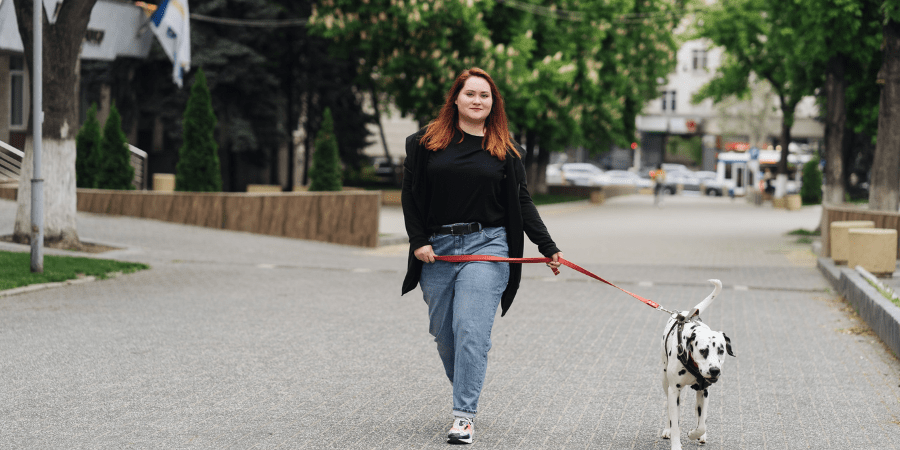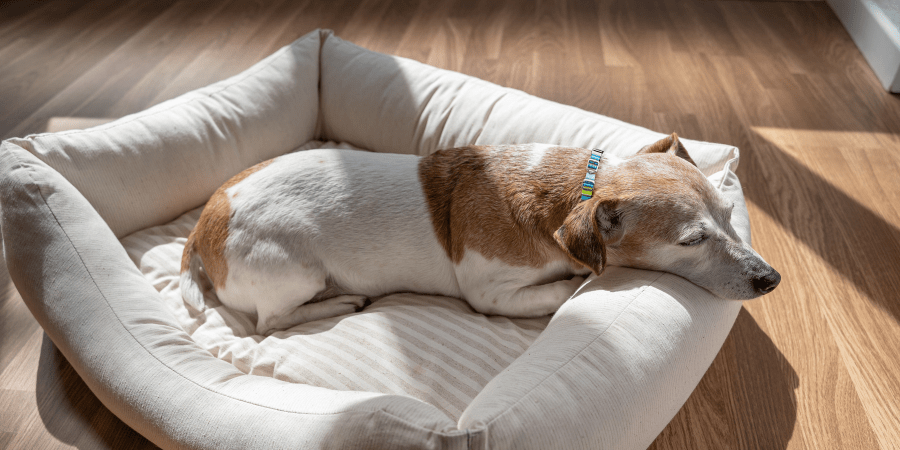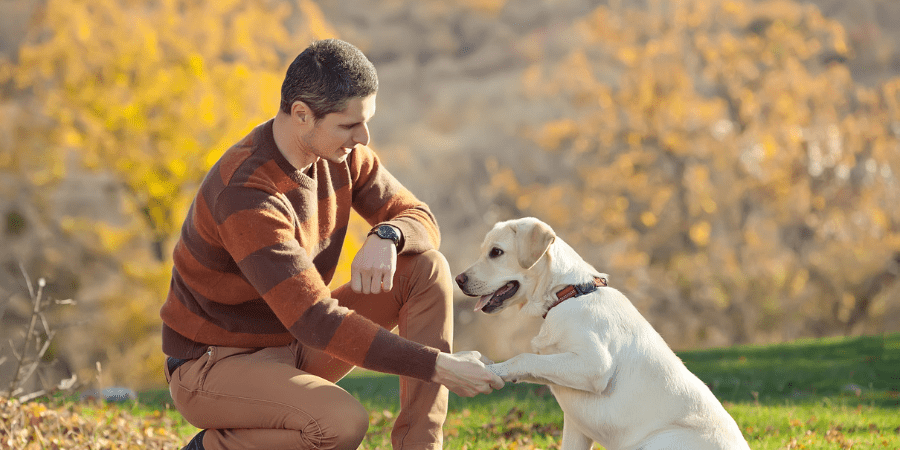Dogs can be stressed from time to time. But too much or constant stress can lead to problems such as anxiety or other behavioural issues. Long term stress also has the potential to cause physical illness such as gastrointestinal problems for your pet.
That’s why it’s so important that we can spot the signs of stress in our dogs early and learn how to prevent it from becoming a long-term problem.
Find out how to spot the signs of stress in dogs, as well as tips on what you can do to prevent stress from developing.
Spotting the signs of stress in dogs
Dogs are always trying to tell us how they’re feeling through body language. In order for us to understand what they are trying to tell us, it is important that we look at the dog as a whole (not just one sign) and the situation they are in. If your furry friend is happy, they will usually have some of the following signs: neutral ears (when their ears hang naturally – not pinned back or tense), a relaxed and waggy tail, and they’ll be happy to interact with you.
If your dog is stressed, you may find them:
- Yawning when they’re not tired.
- Licking their nose or lips.
- Low or tucked tail
- Panting even though they’re not warm.
- With their ears pinned back.
- With stiff or tense body language.
- Keeping their eyes on something but their head is away so you can see the whites of their eyes (also known as whale eye).
- Withdrawing from company or turning away when approached.
- Not eating.
- With low energy.
- Staring at something or someone with a fixed gaze.
You know your dog best, so be sure to contact your vet for a check-up if your dog has a sudden change in behaviour. It’s best to take action early so that it doesn’t lead them to show severe signs of stress, such as aggressive behaviour. Find out more about dog body language.
Causes of stress in dogs
Dogs can become stressed by various things, but it’s usually because they are bored, frustrated, scared or anxious. It can be caused by a change in routine; it could even be something as simple as walking a new route. This is why it’s essential to look out for signs of stress in dogs and find out exactly what is causing it.
It might be helpful to see if there is a pattern to when you notice your dog getting stressed – for example are they at home or out on a walk, is it more noticeable when they are interacting with other dogs or is it when they are left alone.
If you are concerned about your dog being stressed, contact your vet for advice on a tailored approach to support them. Then, you can adapt accordingly and prevent it from developing into something more serious.
Preventing stress in dogs
Thankfully, you can do many things to prevent stress in dogs.
Remove them from the situation

If your dog is scared or anxious, try to remove them from the stressful situation and avoid forcing any interaction that might cause discomfort. Respecting their boundaries and allowing them to retreat to a safe space when feeling overwhelmed is essential for their well-being.
Stick to routines
Make sure you stick to your dog’s regular feeding and exercise routines where possible. If you need to make any changes to their routine, do it gradually so that they have time to adjust.
Keep your dog entertained
Just like us humans, dogs need physical and mental stimulation and can understandably be stressed if they aren’t getting enough or the right type of stimulation.
That’s why you should make sure that they are occupied and fulfilled, and that these needs are specifically tailored to what they enjoy doing as individuals (this may also be influenced by their breed traits for example Labradors like to retrieve). Provide them with companionship by taking them on walks, playing with them and doing lots of positive reward-based training.
We understand that you can’t focus all your attention all the time on your furry friend, so find activities to encourage them to be independent and keep them entertained when you are busy. Such as vet-approved toys, puzzle feeders and snuffle mats – you can even feed them their daily food allowance using these to provide lots of enrichment without the extra calories.
And don’t forget all of this needs to be balanced with lots of downtime for your pooch. Thankfully, these go hand-in-hand as keeping your dog entertained will help them get some rest. Sleep and opportunities for them to rest and decompress are just as important.
Give them their own safe space

Everyone needs their own space to relax and calm down. That’s why it’s important to make sure that your dog has their own area that is quiet, draught free, and where they have access to fresh clean water and a big comfortable bed. Enough sleep is essential to help your dog stay happy. The amount needed varies between dogs, but research suggests that they need over twelve to sixteen hours sleep every day – way more than us!
It’s important that everyone in the house knows not to disturb them when they choose to retreat to their safe space, especially if they are finding things a little too hectic or stressful. It might be useful to teach them the ‘settle’ command using positive reward-based training if they struggle to relax on their own.
Stay calm and don’t punish them

Dogs are extremely intelligent pets that respond to our emotions. So, try not to panic or raise your voice, as this may stress them out even more. If your dog has done something wrong, try not to react. Instead, use reward-based training to reward your dog when they behave as you want them to. By doing this, you will help them to understand what you want them to do, and give them confidence when they are choosing to act in a certain way.
If you find yourself struggling to train your dog or you would like advice on the best way to prevent stress in your dog, speak to your vet, and they may be able to give you tailored advice or refer you to an approved APDT trainer or a certified behaviourist.
For help with preventing stress in cats, read our guide here.
